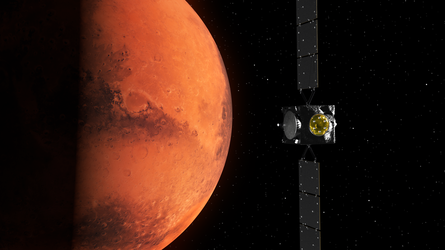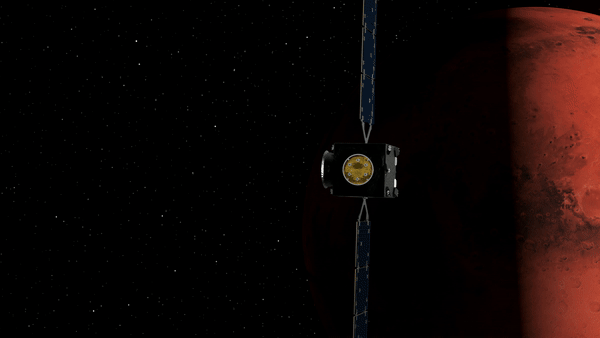Accept all cookies Accept only essential cookies See our Cookie Notice

About ESA
The European Space Agency (ESA) is Europe’s gateway to space. Its mission is to shape the development of Europe’s space capability and ensure that investment in space continues to deliver benefits to the citizens of Europe and the world.
Highlights
ESA - United space in Europe
This is ESA ESA facts Member States & Cooperating States Funding Director General Top management For Member State Delegations European vision European Space Policy ESA & EU Space Councils Responsibility & Sustainability Annual Report Calendar of meetings Corporate newsEstablishments & sites
ESA Headquarters ESA ESTEC ESA ESOC ESA ESRIN ESA EAC ESA ESAC Europe's Spaceport ESA ESEC ESA ECSAT Brussels Office Washington OfficeWorking with ESA
Business with ESA ESA Commercialisation Gateway Law at ESA Careers Cyber resilience at ESA IT at ESA Newsroom Partnerships Merchandising Licence Education Open Space Innovation Platform Integrity and Reporting Administrative Tribunal Health and SafetyMore about ESA
History ESA Historical Archives Exhibitions Publications Art & Culture ESA Merchandise Kids Diversity ESA Brand Centre ESA ChampionsLatest
Space in Member States
Find out more about space activities in our 23 Member States, and understand how ESA works together with their national agencies, institutions and organisations.
Science & Exploration
Exploring our Solar System and unlocking the secrets of the Universe
Go to topicAstronauts
Missions
Juice Euclid Webb Solar Orbiter BepiColombo Gaia ExoMars Cheops Exoplanet missions More missionsActivities
International Space Station Orion service module Gateway Concordia Caves & Pangaea BenefitsLatest
Space Safety
Protecting life and infrastructure on Earth and in orbit
Go to topicAsteroids
Asteroids and Planetary Defence Asteroid danger explained Flyeye telescope: asteroid detection Hera mission: asteroid deflection Near-Earth Object Coordination CentreSpace junk
About space debris Space debris by the numbers Space Environment Report In space refuelling, refurbishing and removingSafety from space
Clean Space ecodesign Zero Debris Technologies Space for Earth Supporting Sustainable DevelopmentApplications
Using space to benefit citizens and meet future challenges on Earth
Go to topicObserving the Earth
Observing the Earth Future EO Copernicus Meteorology Space for our climate Satellite missionsCommercialisation
ESA Commercialisation Gateway Open Space Innovation Platform Business Incubation ESA Space SolutionsLatest
Enabling & Support
Making space accessible and developing the technologies for the future
Go to topicBuilding missions
Space Engineering and Technology Test centre Laboratories Concurrent Design Facility Preparing for the future Shaping the Future Discovery and Preparation Advanced Concepts TeamSpace transportation
Space Transportation Ariane Vega Space Rider Future space transportation Boost! Europe's Spaceport Launches from Europe's Spaceport from 2012Latest

Hera: Target Deimos
Thank you for liking
You have already liked this page, you can only like it once!
ESA’s Hera’s spacecraft’s 12 March 2025 flyby of Mars brings it just 300 km from Deimos, the smaller and further distant of the planet’s two moons. Deimos orbits 20 068 km away from the surface of Mars. This city-sized dusty moon might actually be the leftover of a giant impact on Mars or else a captured asteroid. Hera will image the side of tidally-locked Deimos facing away from Mars. This imagery should help guide to 2026 Japanese-led Martian Moons eXploration Mission, MMX.
Watch the star-studded webcast image release from Hera’s flyby by the mission’s science team on Thursday 13 March, starting at 11:50 CET!
Hera will be using three instruments at a minimum distance of 1000 km from the moon:
- Asteroid Framing Camera: Two redundant 1020x1020 pixel monochromatic visible-light sensors used for both navigation and scientific investigation.
- Hyperscout H: Observing in a range of colours beyond the limits of the human eye, in 25 visible and near-infrared spectral bands
- Thermal Infrared Imager: Imaging at mid-infrared wavelengths to chart surface remperatre, supplied by the Japan Aerospace Exploration Agency, JAXA.
Hera’s flyby send it towards its final destination in late 2026. At 12.4 km across, Deimos is tiny beside Mars but gargantuan compared to the 780-m-long Didymos and 151-m-long Dimorphos asteroids. Dimorphos’s orbit was changed by impacting NASA’s DART mission in 2022. Hera’s close-up data will sharpen scientific understanding of asteroid deflection, helping make Earth safer.
Did you know this mission has its own AI? You can pose questions to our Hera Space Companion!
-
CREDIT
ESA-F. Zonno -
LICENCE
ESA Standard Licence

Hera Mars flyby

Hera's Mars swingby

Real-time simulation of Hera’s Mars flyby

Hera swings by Mars















 Germany
Germany
 Austria
Austria
 Belgium
Belgium
 Denmark
Denmark
 Spain
Spain
 Estonia
Estonia
 Finland
Finland
 France
France
 Greece
Greece
 Hungary
Hungary
 Ireland
Ireland
 Italy
Italy
 Luxembourg
Luxembourg
 Norway
Norway
 The Netherlands
The Netherlands
 Poland
Poland
 Portugal
Portugal
 Czechia
Czechia
 Romania
Romania
 United Kingdom
United Kingdom
 Slovenia
Slovenia
 Sweden
Sweden
 Switzerland
Switzerland

























